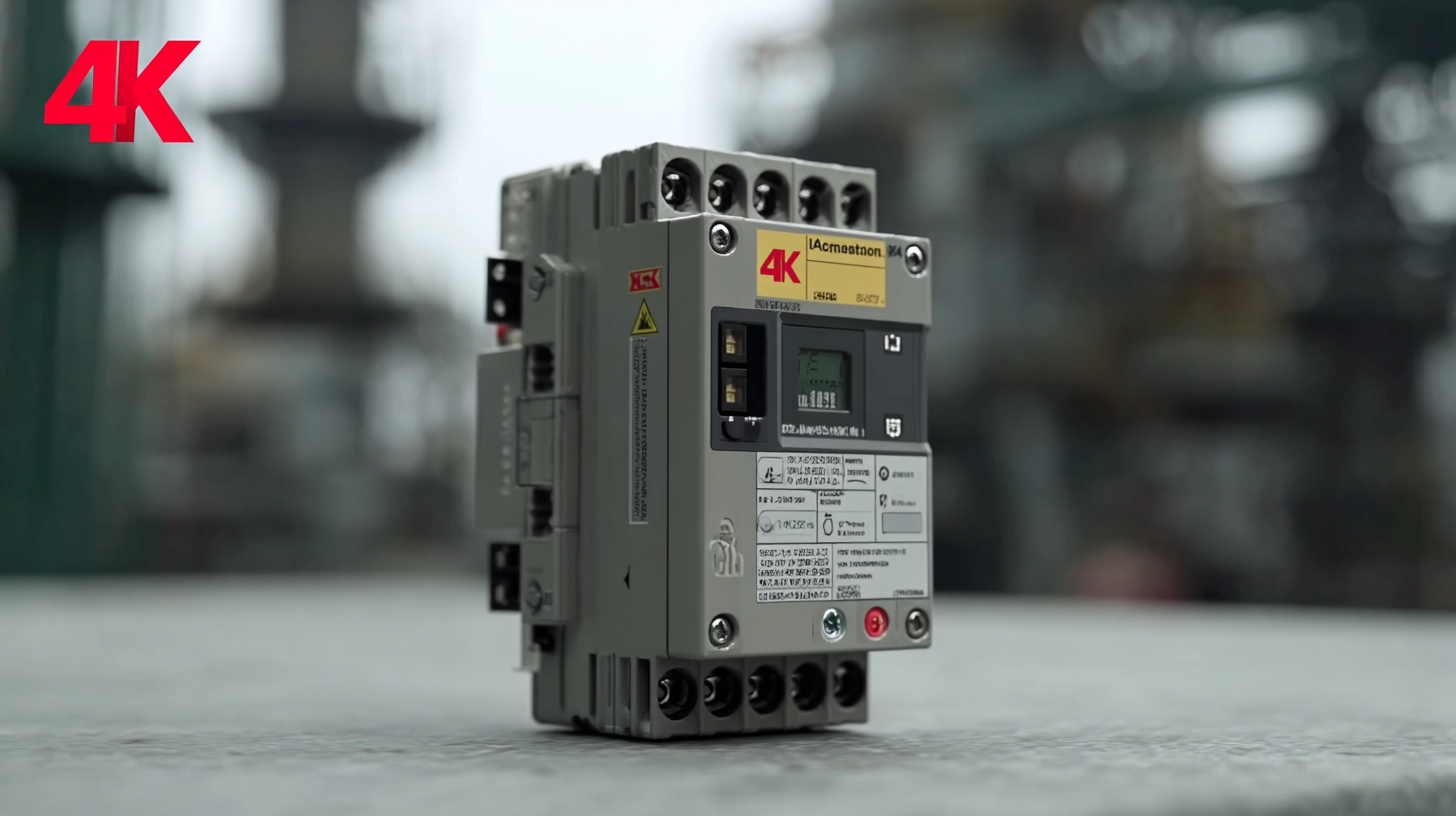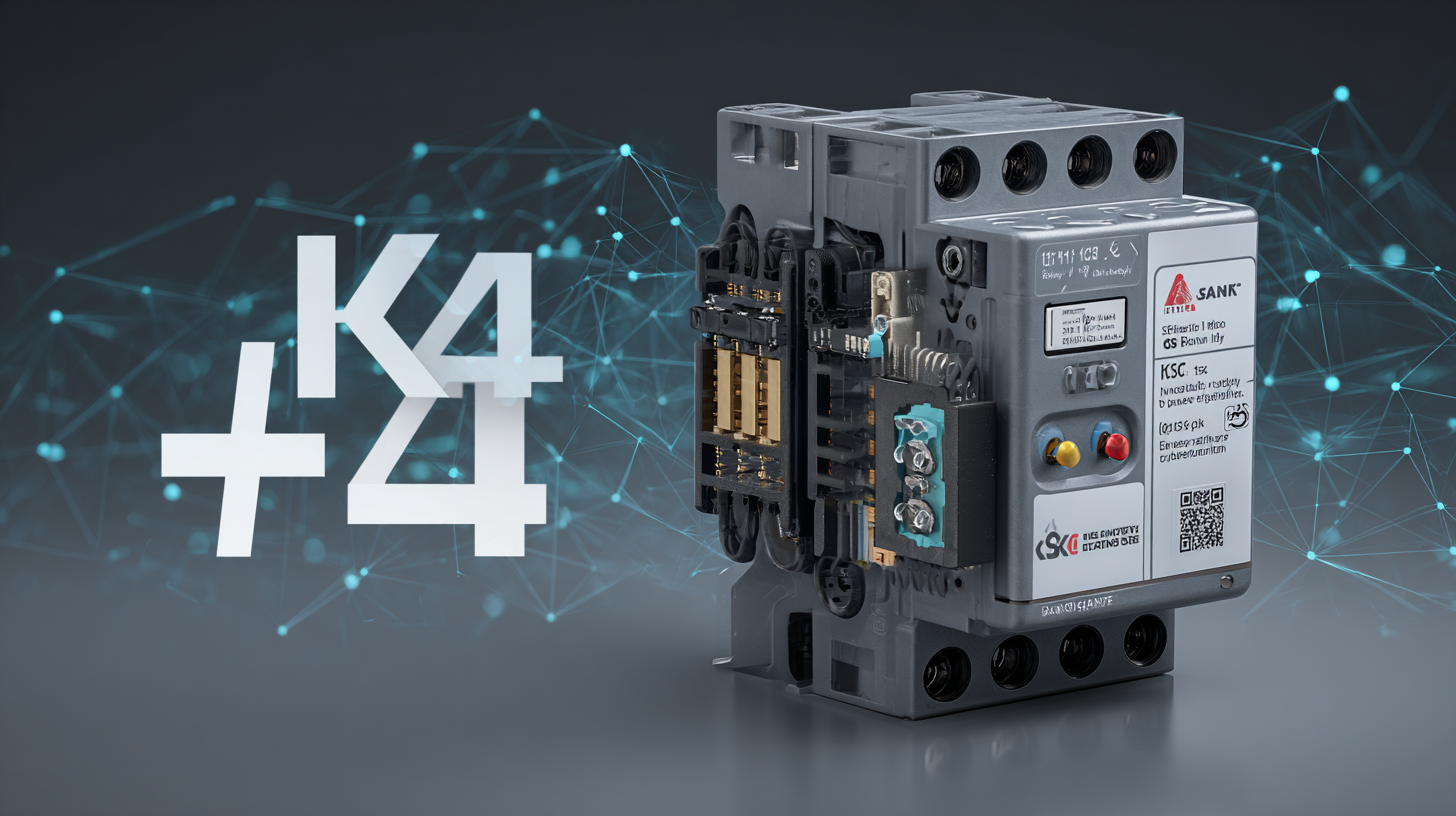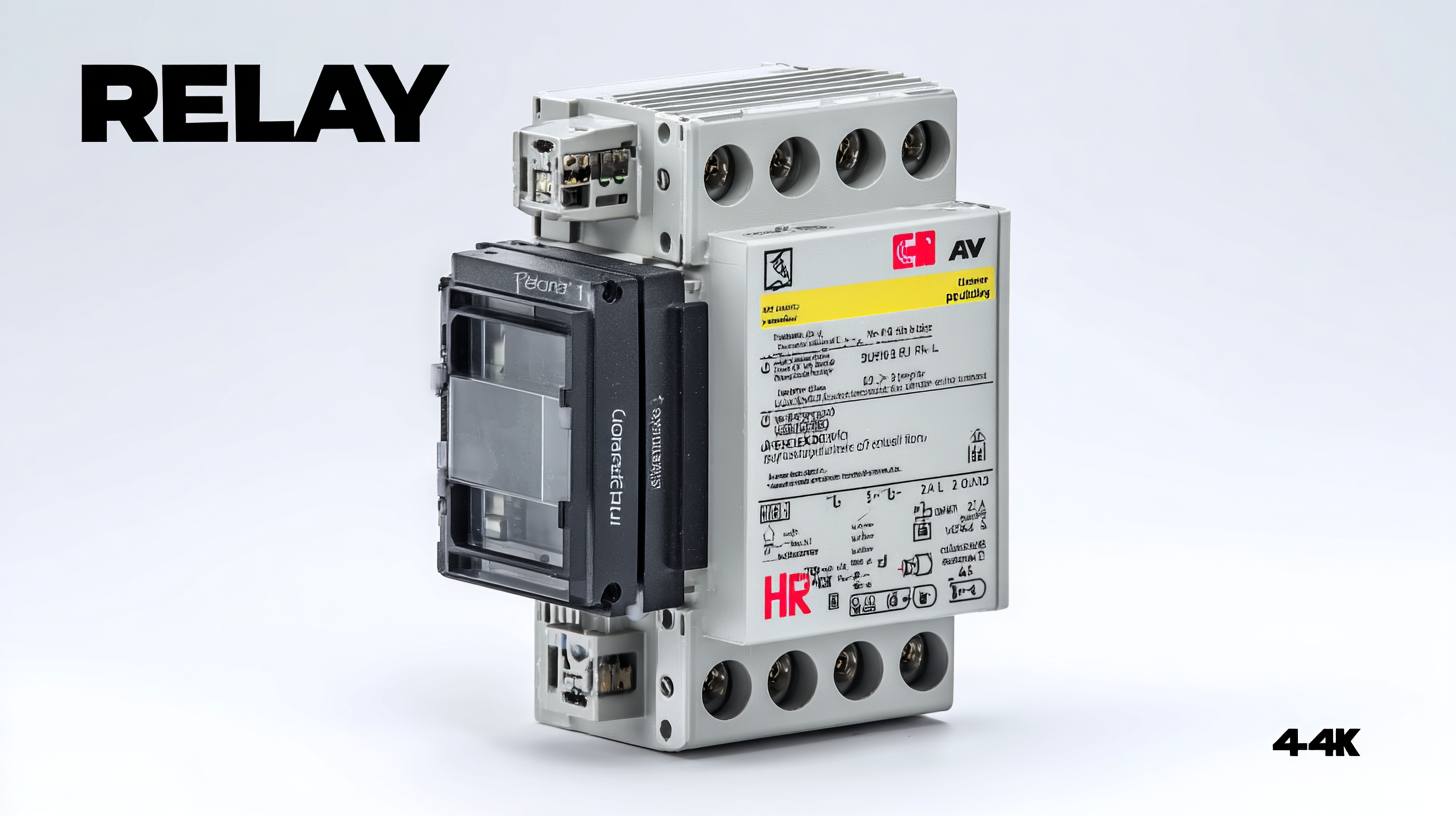In the rapidly evolving landscape of industrial automation, the role of an Industrial Relay has become increasingly critical for ensuring optimal performance and reliability across various applications. As industries strive towards efficiency and cost-effectiveness, selecting the right industrial relay can make a significant difference in operational stability and safety. With advancements in technology, the specifications that define the best industrial relays are more important than ever. This blog explores the five key specifications that should be considered when choosing an industrial relay, providing insights into how these elements contribute to robust performance.

Whether you are looking to upgrade existing systems or invest in new technology, understanding these critical features will empower you to make informed decisions and enhance your operational capabilities. Join us as we delve into the future of industrial relays and their indispensable role in modern industrial settings.
When selecting an industrial relay, it’s crucial to consider several key factors that influence performance and reliability. One of the primary specifications is the type of relay—such as electromagnetic or solid-state—which directly impacts switching speed and durability. Solid-state relays, in particular, are gaining traction due to their enhanced longevity and resistance to mechanical wear, making them ideal for high-frequency applications. As the global market for DC solid-state relays is projected to grow significantly, with a compound annual growth rate of 7.7% from 2025 to 2033, it highlights the shift towards more efficient technologies in industrial applications.
Another important factor to evaluate is the relay's load rating, which must match the specific requirements of your application to avoid premature failure. Additionally, consider the environmental conditions in which the relay will operate—factors such as temperature extremes, humidity, and exposure to dust can affect performance. The choice of contact materials is also critical; they should exhibit excellent conductivity, mechanical strength, and wear resistance to ensure reliable operation over time. By carefully assessing these specifications, businesses can select the best industrial relay suited for their unique needs, ensuring optimal performance and reliability in their operations.

When selecting the best industrial relay, understanding key specifications such as voltage, current, and contact ratings is crucial for optimal performance. Voltage ratings indicate the maximum voltage that a relay can handle without failure, making it essential to choose a relay that matches your system's requirements. For instance, if your application operates at 120V, a relay rated for 240V provides a good safety margin and ensures reliable operation.
Current ratings are equally important, representing the maximum load that a relay can conduct safely. Always select a relay with a current rating that exceeds the expected load; this helps prevent overheating and potential deformation. A general tip is to opt for relays with a higher current rating than necessary, ideally 20-30% above the expected load, to enhance reliability and longevity.
Contact ratings also play a significant role in performance. They dictate the type of load a relay can switch—either AC or DC—and the conditions under which it can operate. For critical applications, consider using relays with multiple contact ratings to ensure versatility and resilience against electrical arcs. Always review the specific applications of your relay to avoid premature failure and ensure consistent operational performance.
| Specification | Standard Value | Description |
|---|---|---|
| Voltage Rating | 12V - 240V | Indicates the range of voltage the relay can operate safely. |
| Current Rating | 5A - 30A | The maximum current the relay can handle without damage. |
| Contact Ratings | AC 10A, DC 10A | Specifications for AC and DC loads that the relay contacts can switch. |
| Coil Resistance | 200Ω - 500Ω | The resistance measurement of the relay's coil, affecting power consumption. |
| Operating Temperature | -20°C to +70°C | The range of temperatures within which the relay will function effectively. |
In the realm of industrial applications, the durability of relays plays a critical role in ensuring optimal performance and reliability. Industrial environments often expose relays to extreme conditions, including high temperatures, vibrations, and fluctuating power sources. Therefore, selecting relays designed to withstand these challenges is essential for maintaining operational efficiency. A high-durability relay can significantly reduce the risk of failure, thereby minimizing downtime and maintenance costs.
Durability in relays is not merely about robust construction; it also involves the quality of materials used and the design specifications that enhance longevity. For instance, relays with sealed enclosures can protect against dust and moisture, which are prevalent in many industrial settings. Furthermore, advanced materials, such as high-performance plastics and corrosion-resistant metals, can extend a relay’s life cycle significantly. Understanding the nuances of relay durability helps engineers make informed decisions, ensuring reliable performance and enhancing the overall resilience of their industrial systems.
In the realm of industrial automation, the performance of relays is pivotal, especially concerning their response time and switching frequency. A relay's response time directly affects how quickly a system can react to changes in input conditions, which is crucial for maintaining operational stability. Fast response times are essential for processes that require immediate adjustments—particularly in unstable or integrating systems that may otherwise lag behind process changes. Effective switching frequency can significantly enhance a system's efficiency, allowing for more cycles per minute and reducing the likelihood of mechanical wear and tear.
Tips: When selecting a relay, consider the specific requirements of your application. Look for models that provide a rapid response time of around 10 milliseconds or less, particularly in high-speed processes. Furthermore, the switching frequency should ideally align with the operational demands—higher frequencies can lead to greater energy efficiency but may require more sophisticated designs to avoid overheating.
Additionally, integrating solid-state relays can offer advantages over traditional electromechanical options, as they maintain consistent switching performance with minimal downtime. Reports indicate that solid-state relay usage in industrial settings can reduce maintenance expenses and improve reliability, creating a more robust automation ecosystem that meets the demands of modern manufacturing.
This chart illustrates the key specifications of industrial relays that influence their performance and reliability. The metrics include response time, switching frequency, contact rating, coil voltage, and operating temperature, all critical for optimal operation in various industrial applications.
In the realm of industrial relay design, ensuring safety standards and compliance is paramount for protecting both machinery and personnel. According to a report by the Underwriters Laboratories (UL), about 33% of industrial accidents are linked to electrical failures, which highlights the necessity for robust relay systems that adhere to stringent safety regulations. These guidelines not only foster workplace safety but also enhance the reliability of operations. Compliance with standards such as IEC 61800-5-1, which governs safety requirements for adjustable speed electrical power drive systems, is crucial for minimizing risks associated with electrical equipment.
Furthermore, rigorous testing and certification processes play a pivotal role in maintaining compliance and safety. The International Electrotechnical Commission (IEC) emphasizes the importance of certifications like CE and UL, which assure users that the relays have passed stringent safety assessments and performance validations. A comprehensive analysis by Frost & Sullivan indicates that companies investing in high-quality, compliant relays experience a 25% reduction in operational downtime. This not only improves productivity but also supports a culture of safety within industrial environments, making the design of industrial relays not just a technical challenge but a vital component of operational excellence.

TradeManager
Skype
VKontakte

